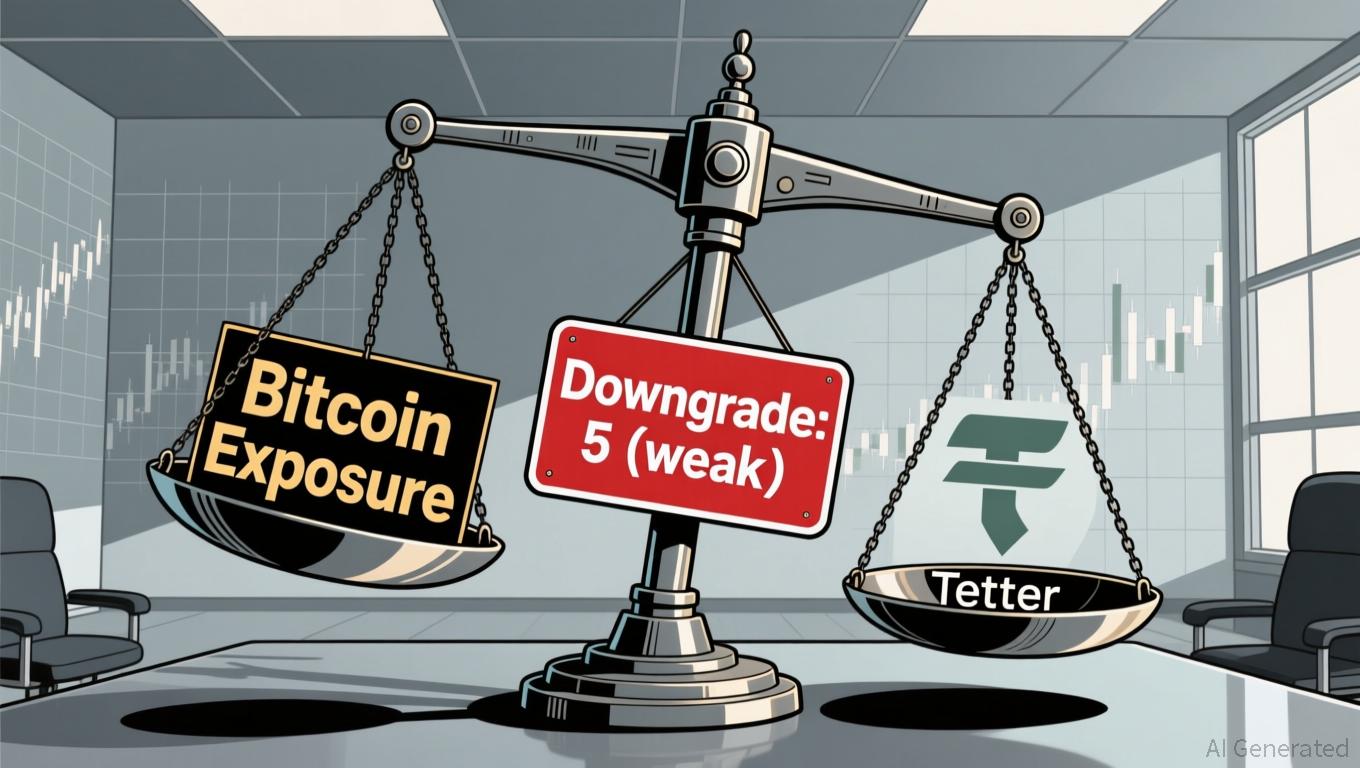Bitcoin News Update: Tether’s Risky Asset Holdings Challenge Stablecoin Reliability
- S&P Global downgrades Tether's USDT to "5 (weak)" due to high-risk reserves and transparency gaps. - Tether's 5.6% Bitcoin exposure exceeds S&P's 3.9% overcollateralization threshold, risking undercollateralization if prices fall. - Tether defends practices with quarterly audits and $10B 2025 profit, dismissing the downgrade as outdated. - Recent crypto market turmoil and past stablecoin collapses highlight risks in opaque reserve management. - Tether's resilience amid crises contrasts with S&P's warning
Tether's
This downgrade comes as

Tether's latest financial activities also demonstrate its shifting tactics. In November, the company resumed purchasing shares in Bitdeer—a Bitcoin mining firm now pivoting to AI—buying 1.89 million shares on the open market after previously selling 7.7 million shares for $166 million
The downgrade and changes in operations have wider consequences for the stablecoin sector, which has experienced instability before. In 2023, Circle's
The company's ability to withstand crypto market upheavals—such as remaining stable during the 2022 crisis—has strengthened its standing, but S&P's evaluation marks a pivotal moment. As institutional players pay closer attention to stablecoin reserves, Tether's challenge will be to manage its growth in higher-risk assets while maintaining transparency, which will be crucial for preserving its lead in the $184 billion stablecoin market.
Disclaimer: The content of this article solely reflects the author's opinion and does not represent the platform in any capacity. This article is not intended to serve as a reference for making investment decisions.
You may also like
Ethereum News Update: Ethereum Surges Past $3,000, Bulls Eye $3,400 Target
- Ethereum (ETH) surged past $3,000 in early November 2025, with technical and on-chain data indicating potential for further gains toward $3,400 if the level holds. - Institutional inflows, including $88M into BlackRock's ETHA ETF, contrast with broader crypto outflows, while valuation models suggest a 57-90% undervaluation. - Mixed on-chain signals show recovering active addresses and a low MVRV Z-Score (0.29), historically preceding accumulation phases, but stagnant new address growth limits upside pote

Blockchain Connects K-pop's Worldwide Fans and Investors, Transforming the Concept of Entertainment Ownership
- WITCH blockchain partners with SBI, DIOD , and Kyobo Life to tokenize K-pop real-world assets like concert revenue and merchandise rights. - The initiative aims to democratize entertainment investments via blockchain, enabling fractional ownership and global accessibility for fans and crypto investors. - Challenges include regulatory compliance across jurisdictions and educating traditional fans about blockchain's value proposition. - Initial products will launch in months, starting with small-scale offe

The Growing Convergence of Legal Studies and Social Impact Investment
- Berkeley Law's PISP offers full-tuition scholarships to JD students pursuing public interest careers, reducing debt barriers for social justice work. - Graduates earn median $72,000 salaries but maintain debt-free careers in criminal justice reform, reproductive rights, and corporate accountability. - The program creates long-term societal impact through sustained public service, aligning with social impact investing principles prioritizing systemic change over short-term profits. - By embedding scholars

PENGU USDT Selling Alert and Stablecoin Price Fluctuations: An Important Reminder for Investors
- PENGU USDT's 28.5% plunge in late 2025 exposed systemic risks in stablecoin ecosystems, highlighting vulnerabilities in USDT-backed tokens amid regulatory scrutiny. - USDe's October 2025 depegging to $0.65 triggered $20B losses in DeFi, revealing algorithmic stablecoins' fragility during market stress and leverage-driven feedback loops. - EU's MiCA ban on algorithmic stablecoins and U.S. GENIUS Act reforms aim to mitigate risks, but large stablecoins like USDT remain exposed to liquidity crises and cross
